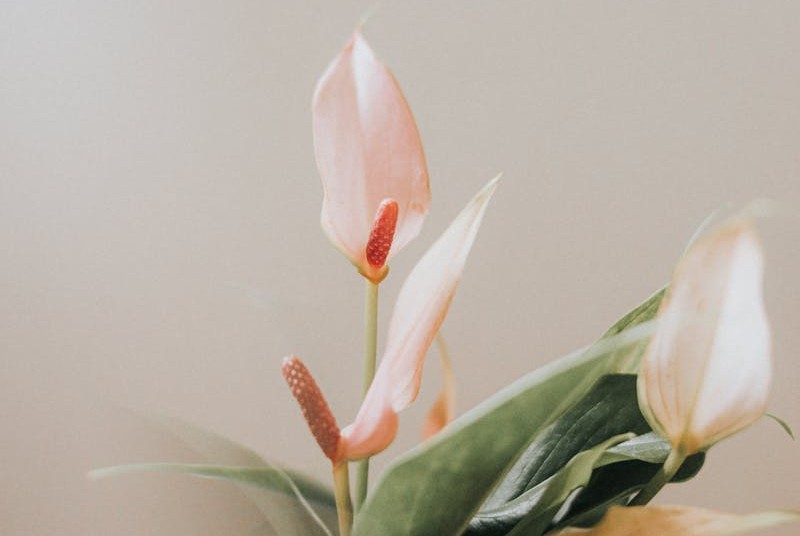
Some of the links on this website are affiliate links. This means that if you click on a link and make a purchase, I may receive a small commission at no extra cost to you. As an Amazon Associate I earn from qualifying purchases.
Peace Lily How To Care
Peace Lily How to Care: The Ultimate Guide
Peace lilies (Spathiphyllum), with their stunning white blooms and lush green foliage, are one of the most popular houseplants worldwide. Known for their easy care, air-purifying qualities, and beautiful appearance, peace lilies make an excellent choice for both beginners and experienced gardeners. However, to keep your peace lily thriving, there are specific care instructions that need to be followed. In this comprehensive guide, we will explore everything you need to know about peace lily care—from watering to fertilizing and beyond.
Why Choose a Peace Lily?
Before diving into the care requirements, it’s important to understand why peace lilies are such a beloved plant. Peace lilies are not only visually striking, but they also offer several practical benefits:
- Air-Purifying: Peace lilies are excellent at purifying the air by removing harmful toxins such as benzene, formaldehyde, and ammonia.
- Low Light Tolerance: Peace lilies can thrive in low light conditions, making them perfect for offices, bedrooms, or spaces with indirect sunlight.
- Easy to Care For: Peace lilies are relatively low-maintenance, making them an ideal plant for beginners or those with a busy lifestyle.
- Lighting Requirements
- Indirect Light: Place your peace lily in a spot with bright, indirect light, such as near a north or east-facing window. Direct sunlight can scorch the leaves, causing browning and damage.
- Low Light: Peace lilies can survive in low light conditions, though they may not bloom as frequently. If your plant is placed in a dimly lit room, it may require less water as the growth rate slows down.
- Watering Your Peace Lily
- Watering Schedule: Peace lilies generally like their soil to remain slightly moist. When the first 1-2 inches of the soil gets dry, it is time to water the plant. This usually translates to watering once a week, but it can vary based on environmental factors.
- Signs of Overwatering: Yellowing leaves and root rot are common signs of overwatering. If you notice these, reduce the watering frequency and ensure the plant’s pot has proper drainage.
- Signs of Underwatering: If the leaves begin to wilt, dry out, or turn brown at the tips, your peace lily may be underwatered. Ensure you water it thoroughly when the soil is dry.
- Water Type: It’s best to use room-temperature water. If possible, use distilled water or rainwater, as peace lilies are sensitive to the salts and chemicals found in tap water, especially if it’s heavily chlorinated.
- Soil and Potting Needs
- Soil: Peace lilies prefer well-draining, light potting soil. A mix designed for houseplants or a combination of peat, perlite, and pine bark is ideal.
- Pot: Choose a pot with drainage holes to prevent water from accumulating at the bottom and causing root rot. A pot that is 1-2 inches larger in diameter than the current one is usually the best option for repotting.
- Temperature and Humidity
- Humidity: Peace lilies love humidity. If the air in your home is dry, especially in winter, consider increasing humidity levels. You can do this by misting the leaves, using a humidifier, or placing the plant on a tray filled with water and pebbles.
- Fertilizing Your Peace Lily
- Fertilizing Frequency: Feed your peace lily once a month during the growing season (spring and summer) using a balanced liquid houseplant fertilizer. Reduce the feeding frequency to every 6-8 weeks during fall and winter when the plant is dormant.
- Signs of Over-Fertilizing: If you notice brown tips on the leaves or white residue on the soil surface, you may be over-fertilizing. Rinse the soil with water to wash away any excess fertilizer salts.
- Pruning and Deadheading
- Deadheading: When the white flowers start to fade and turn brown, remove them by cutting the flower stalk at the base. This will not only improve the plant’s appearance but also help conserve energy for the plant.
- Leaf Pruning: Trim any damaged or yellowing leaves at the base using clean, sharp scissors. This keeps the plant healthy and reduces the risk of disease.
- Repotting Your Peace Lily
- Signs Your Peace Lily Needs Repotting: If you notice that the plant is becoming root-bound (roots growing through the drainage holes), or the soil is drying out too quickly, it may be time to repot.
- How to Repot: Choose a pot that is 1-2 inches larger than the current one. Gently remove the plant from its pot, trim any dead or rotting roots, and place it in fresh potting soil. Be sure not to bury the crown of the plant too deep.
- Common Peace Lily Problems and Solutions
- Yellowing Leaves: This could be a sign of overwatering, underwatering, or too much direct sunlight. Check the soil moisture and modify the watering schedule as needed. Move the plant to a location with less direct sun exposure if necessary.
- Brown Tips: Brown tips can occur due to low humidity, over-fertilizing, or the plant being exposed to drafts or cold temperatures. Increase humidity, reduce fertilizer use, and ensure the plant is kept in a warm, draft-free location.
- Drooping or Wilting: If your peace lily’s leaves are drooping or wilting, this is likely a sign of underwatering. Ensure that you are watering the plant thoroughly when the soil feels dry.
- Spathiphyllum ‘Mauna Loa’: This variety is known for its large, dark green leaves and beautiful white blooms.
- Spathiphyllum ‘Clevelandii’: Known for its long, narrow leaves and elegant appearance, this variety is perfect for those looking for a more refined look.
- Spathiphyllum ‘Domino’: This variety features striking white spots on its leaves, giving it a unique appearance.